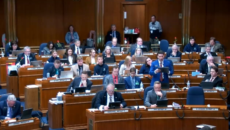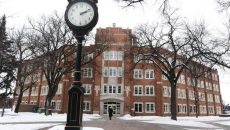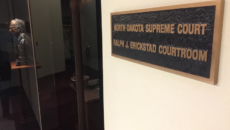North Dakota Student Loan Debt Has Increased 125% At NDSU, UND

According to the Grand Forks Herald, student loan debt accumulation has increased dramatically over the last decade:
In the 2010-2012 school year, undergraduate and graduate students at UND and North Dakota State University borrowed an average of $7,855 in a year, according to the university system report released Friday. That’s up 125 percent over the past decade.
For a comparison, the Midwest inflation rate in that same period was 27 percent, according to the U.S. Bureau of Labor Statistics.
“The increase indebtedness is due to a number of factors, including students’ ability, starting in 2007, to borrow more than previously allowed, and the rapid increase in tuition rates,” writes reporter Jennifer Johnson, but that’s a little misleading. Most students aren’t in the habit of borrowing more than they need. They’re going into debt to finance a degree. If tuition weren’t also skyrocketing, they wouldn’t need to borrow more no matter what the borrowing limits.
Of course, tuition no doubt increased because raided borrowing limits provided the market elasticity, proving once again the vicious cycle between tuition subsidies and tuition increases. The more we subsidize tuition, the more expensive it becomes.
But what’s really bad is that even as tuition, and thus indebtedness, goes through the roof the value of the degrees the students are purchasing isn’t increasing:
UND alumni living in North Dakota made an average salary of $36,862 a year in 2012, said the UND report, which surveyed those graduating from December 2009 to August 2010. The report came out in May. Those living in Minnesota make an average $43,023. Those living in other states make $48,174.
The same study also broke down salaries by schools within the university, and it’s pretty much as expected: Graduates of the School of Engineering and Mines and the School of Medical and Health Sciences make more than graduates of the School of Education and Human Development.
But it also shows that first-year salaries have not kept up with inflation for many. While engineering graduates have seen salaries grow 11 percent between 2000-2001 and 2009-2010, inflation in that period was 20 percent. Med school graduates have seen salaries grow 4 percent. Education graduates have seen salaries grow 23 percent. Aerospace graduates have it the worse; they’ve seen their salaries grow less than 1 percent.
In short, students are paying far more (and accumulating a lot more debt) for degrees that are, frankly, worth less.
But here’s a question: Why has tuition gone through the roof? The primary purpose of state universities is to provide affordable higher education. The taxpayers subsidize these institutions so that, in turn, they can provide cost-effective degree programs. Given the growth in tuition (not to mention fees) we know the cost-effective part isn’t true any more. And, given the lavish investment North Dakotans have made into the university system, we know it’s not due to a paucity of public funding:

What you’re looking at is a 150% increase in total higher education appropriations (assuming Governor Dalrymple’s budget recommendations for the coming biennium are approved by the legislature, which they probably will be with little change) and just an 8% increase in enrollment.
Our per-student funding of higher education has gone through the roof. But tuition has also gone through the roof. So where is all this additional money going? Why isn’t this increase in taxpayer spending holding tuition down?
The answer, of course, is because the university system isn’t prioritizing students. The money is being spent on bloating university payrolls. As we can see from this chart, non-instructional employees in the university system has grown 40% over the last decade versus just a 3.5% increase for instructional employees:

Campuses are getting bigger. The perks and paychecks for faculty and administrators are getting more lavish. The sports programs are bigger than ever. But it’s all a bubble, being inflated by heavy taxpayer subsidies and staggering amounts of student loan debt.
Our state universities – again, started to provide cost-effective education for the students of this state – are providing educations that are increasingly overpriced while subsidizing a high-on-the-hog existence for the university system elite.







